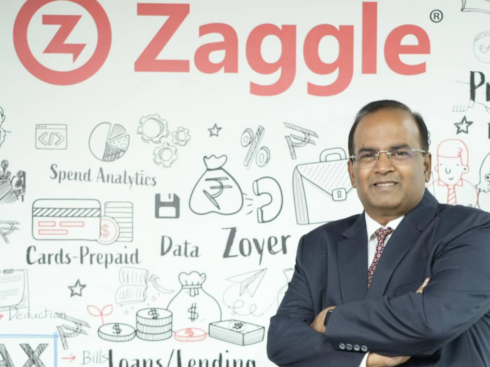
SUMMARY
UPI will increase in significance in 2019
The future of fintech definitely involves AI
In 2019 and beyond we will surely see more new entrants in mobile payments
The global financial crises of 2008-09 was a time of reckoning for the financial services sector that had far-reaching consequences on the overall economy. One of the consequences was the amalgamation of two separate industries or sectors that have come to be known as “Fintech”.
The industry is characterised by digital innovations and technology-enabled business models in the financial services sector. Its evolution was primarily a function of the excesses, inefficiencies and unexplored opportunities inherent in the respective markets.
Key Drivers
Before we explore the Fintech trends in 2019 and beyond, it is imperative that we discuss the key drivers of the fintech industry.
- Cost: the cost of financial intermediation remains relatively unchanged for over 100 years preceding the global financial crises[1]. Innovations in Fintech have primarily revolved around reducing, if not eliminating, this cost.
- Regulation: in the recent past, regulation has aimed at making financial services more inclusive. This democratisation has been conducive to Fintech start-ups.
- Legacy: numerous mergers and acquisitions by large banks have not only made them “too big to fail”, but also mired in legacy technology. The scenario has paved the way for Fintech to start from scratch, which has been easier and more effective in capturing market share.
- Leverage: post the 2008-09 crises, financial leverage has become expensive and cumbersome. Fintech relies on technological leverage as opposed to financial leverage which has made it a force to be reckoned with.
In contrast to the above list, fintech faces numerous challenges. The most formidable challenge is the entry barrier to some key areas of financial services as a result of highly entrenched incumbents. One such area is a trustee and custodial services.
Looking Ahead
As the year 2018 draws to an end, we can already see patterns emerging in what is to become the future of Fintech. Here’s an insight into my opinion of what the future holds.
Unified Payments Interface (UPI)
UPI will increase in significance in 2019. This technology possesses immense potential and relevance for multiple participants in the ecosystem. UPI brings incredible convenience to the end-user while increasing digital footprint for the supply side of the financial services chain. UPI will enable several types of Fintech companies to expand their operations and footprint,
- UPI will encourage digital payments, which would increase the suitability of SMEs availing quick loans from Fintech companies based on the digital data created.
- LendingTech will transform underwriting practices with personal loans increasingly being availed through digital channels.
- Through UPI, WealthTech will increase the digital footprint of mutual fund products.
- InsureTech might witness a rise in small ticket policies like Ola Ride Insurance. In 2019, we may see an increase in such event based covers.
Blockchain
Arguably, this was one of the biggest innovations to hit financial services since the Internet. Safe to assume to that we haven’t seen the last of it. Cryptocurrencies may have gone through a boom-bust cycle, but the technology behind it will flourish in the years to come.
For example, current underwriting models rely heavily on data that is stored in silos (e.g. credit bureaus) that can be manipulated by fraudulent borrowers. With Blockchain, such malpractice is virtually impossible, leading to better underwriting outcomes.
Artificial Intelligence (AI)
The technology has been in testing for many decades and is now gaining acceptance in many areas, including financial services. The future of fintech definitely involves AI. One area that is already gaining traction is “robo advisory” i.e. wealth management solutions that involve some form of machine learning.
Equity Crowdfunding
Quite possibly the equity market equivalent of P2P lending, equity crowdfunding is in a nascent stage. It is also a classic case of financial dis-intermediation which poses a challenge to traditional methods of raising equity capital for entrepreneurial ventures via e.g. venture capital.
Given the large number of funders and small ticket sizes, this part of the capital market will inevitably fall into the ambit of Fintech in the coming years.
Mobile Payments
The past few years have witnessed a flurry of activity in the mobile payments space; the entry of Whatsapp being the latest. In 2019 and beyond we will surely see more new entrants, and more importantly, new fintech innovations in this space.
Furthermore, UPI 2.0 that was introduced in August 2018 and the overdraft facility associated with it (that is currently in beta testing) will introduce thousands of end-users to a new form of credit. UPI 2.0 may also become a preferred form of making recurring payments such as EMIs.
Conclusion
The growth of the fintech industry in the last decade has been phenomenal. The key drivers of this growth identified here are merely the tip of the iceberg. For example, the cost of financial intermediation is still relatively high compared to other services rendered in the economy.
Therefore, we can expect fintech innovations in this space driving down costs for the consumers. Moreover, the trends discussed here are sure to attract regulatory responses.
For instance, cryptocurrencies have received some bad press in 2018 and we may see new versions of Blockchain technology arising from regulatory arbitrage. Summarily, 2019 will surely surpass 2018 in terms of Fintech innovation and promises to be an exciting year for all stakeholders.
[1] According to Philippon (2015), the cost of financial intermediation in the US was around 2% for 130 years leading up to the global financial crises.


























